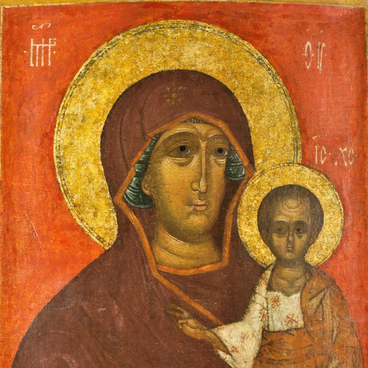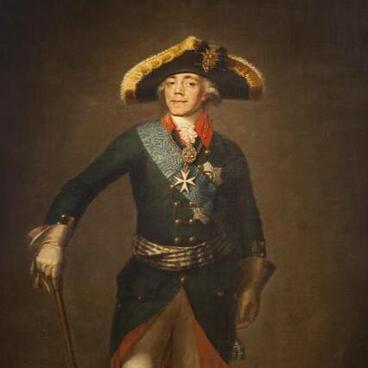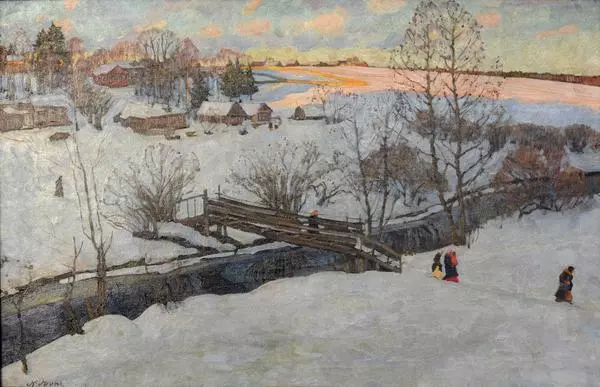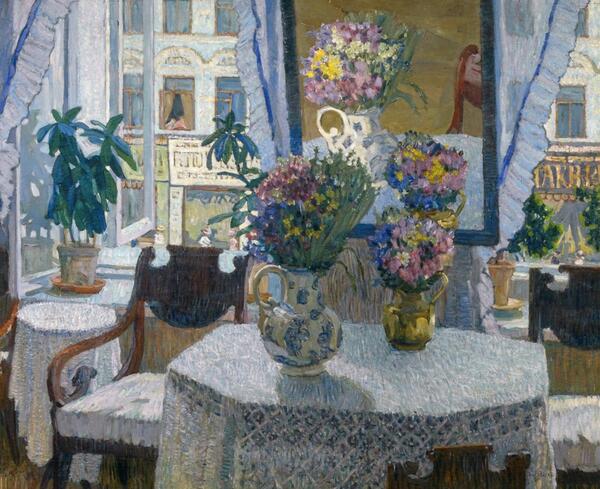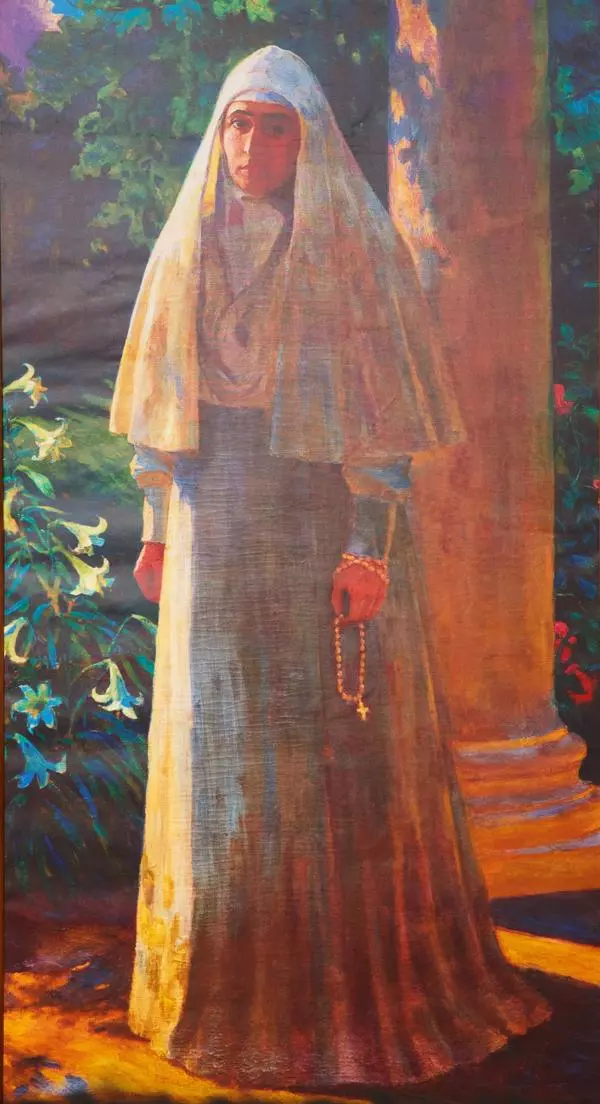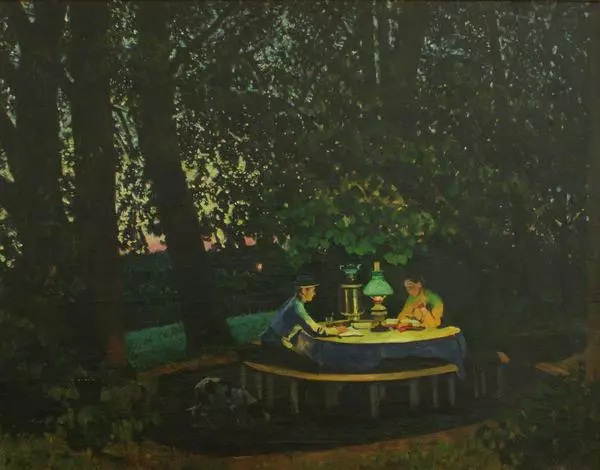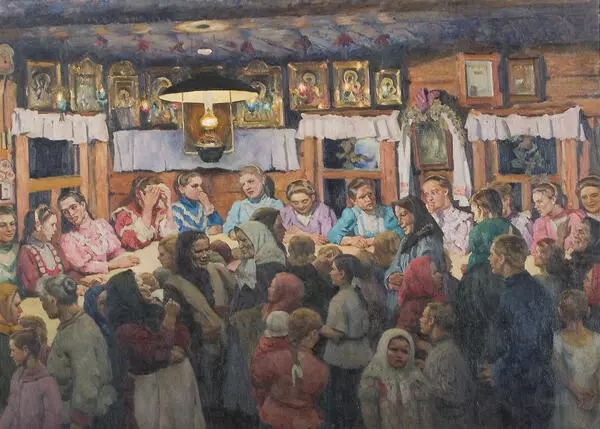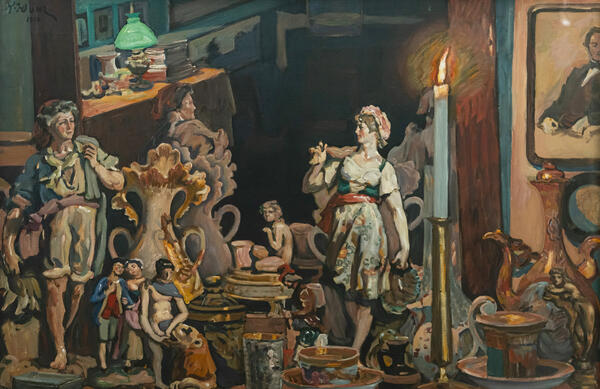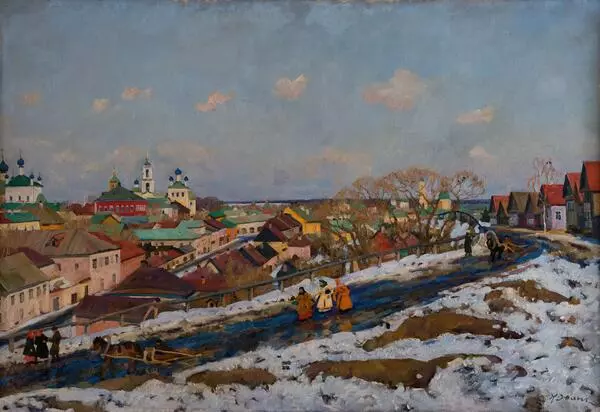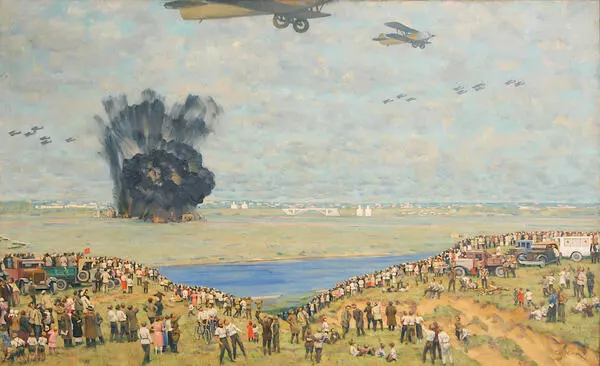Konstantin Yuon was a master of architectural landscape. He enjoyed painting the modest and beautiful scenery of Central Russian and the greatest monuments of ancient architecture surrounded by modern buildings. The artist portrayed old provincial Russian cities and his hometown Moscow. Throughout the Great Patriotic War, he remained in the capital city. Even in winter, he continued painting in his cold studio without any heating. Yuon, like many artists during the hard period of war, considered it his patriotic duty to paint and in this way to participate in the common struggle for victory.
One frosty December morning, as he was crossing the Moskvoretsky bridge, the artist noticed the amazing view as the Kremlin was lit by the rays of the rising sun. The bridge was in thick morning fog, but the life there was in full swing: making their way through the snow-covered streets, workers hurried to factories, barrage balloons were brought across the bridge, even rows of armed soldiers moved towards them. This combination of the lively rhythm of the military capital and the breathtaking beauty of the Moscow Kremlin lit by the sun made an overwhelming impression on the artist. The painter hurried to his studio to render everything on the canvas.
Years later, Konstantin Yuon said that he had developed a kind of a method. The artist brought the canvas outside, and then continued the work at home waiting for the next suitable state of nature. He knew exactly at what time the lighting he needed would appear, and he came in advance in exactly one hour. ‘… And when this moment came, I put down the brush and only observed the interconnection of all parts of the picture, its essence, ” the artist said.
The vivid impression left by the December morning view inspired the artist to create a picture, which he painted throughout the winter. In 1942, Yuon finished the painting, which he called “Moscow Morning”. It tells the story of the days when the defeated German troops were still a threat to the capital. Nevertheless, the artist’s complete faith that the future victory will come soon is felt in the whole atmosphere of the painting, in the domes reaching upwards towards the high sky.
The painting entered the museum in 1948 from the Committee for Arts supervised by the Council of Ministers of the USSR.
One frosty December morning, as he was crossing the Moskvoretsky bridge, the artist noticed the amazing view as the Kremlin was lit by the rays of the rising sun. The bridge was in thick morning fog, but the life there was in full swing: making their way through the snow-covered streets, workers hurried to factories, barrage balloons were brought across the bridge, even rows of armed soldiers moved towards them. This combination of the lively rhythm of the military capital and the breathtaking beauty of the Moscow Kremlin lit by the sun made an overwhelming impression on the artist. The painter hurried to his studio to render everything on the canvas.
Years later, Konstantin Yuon said that he had developed a kind of a method. The artist brought the canvas outside, and then continued the work at home waiting for the next suitable state of nature. He knew exactly at what time the lighting he needed would appear, and he came in advance in exactly one hour. ‘… And when this moment came, I put down the brush and only observed the interconnection of all parts of the picture, its essence, ” the artist said.
The vivid impression left by the December morning view inspired the artist to create a picture, which he painted throughout the winter. In 1942, Yuon finished the painting, which he called “Moscow Morning”. It tells the story of the days when the defeated German troops were still a threat to the capital. Nevertheless, the artist’s complete faith that the future victory will come soon is felt in the whole atmosphere of the painting, in the domes reaching upwards towards the high sky.
The painting entered the museum in 1948 from the Committee for Arts supervised by the Council of Ministers of the USSR.


